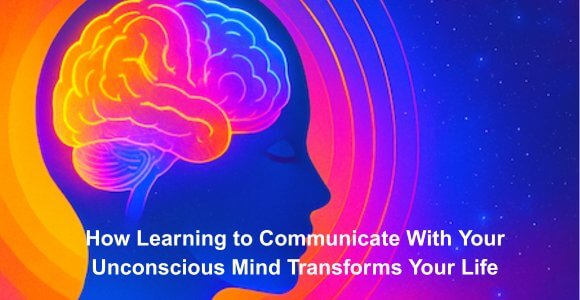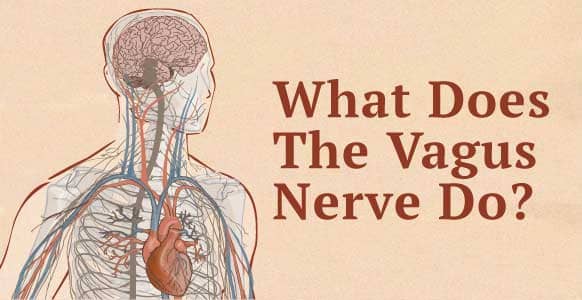
Close your eyes for a moment and think about breathing.
Notice how your breath moves in and out. Feel your chest rise and fall.
Now here’s a curious question:
Who was breathing for you before you brought your attention to it?
While you were reading the previous sentences, something was managing your respiratory system, regulating your heart rate, processing visual information, maintaining your balance, and performing thousands of other operations—all without your conscious awareness.
That “something” is your unconscious mind and it’s far more powerful, sophisticated, and influential than most people realize.
Understanding and communicating with your unconscious mind isn’t just a fascinating psychological concept. It’s a practical skill that can transform how you approach personal growth, overcome limitations, and create lasting change. And hypnosis provides a uniquely effective method for establishing that dialogue.
The Science Behind the Unconscious: It’s Real, Powerful, and Always Active
For years, the unconscious mind was dismissed as pseudo-scientific speculation. Today, neuroscience has confirmed not only that it exists, but that it’s responsible for the vast majority of your mental processing.
Research by cognitive neuroscientist David Eagleman suggests that your conscious awareness may account for only about 5% of your cognitive activity. The remaining 95% happens beneath conscious awareness in the unconscious mind. This means that the thoughts you think, the choices you make, and even the emotions you feel are largely shaped by forces operating outside your conscious control or awareness.
To put that into perspective, consider the landmark study by Benjamin Libet in the 1980s which revealed something startling about decision-making. Using EEG technology, Libet discovered that brain activity indicating a decision occurred up to half a second before participants became consciously aware of making that decision. In other words, your unconscious mind was already preparing for action before your conscious mind thought it had decided!
More recent research using fMRI technology has pushed this even further. A 2008 study published in Nature Neuroscience showed that researchers could predict participants’ decisions up to seven seconds before they became consciously aware of their choice. Seven seconds is an eternity in neural processing time.
What does this mean? Your unconscious mind is constantly processing information, recognizing patterns, making assessments, and preparing responses all before your conscious mind catches up.
From an evolutionary standpoint, the dominance of the unconscious mind makes perfect sense.
Long before we developed complex language or abstract reasoning, survival depended on rapid, automatic processing. Our ancestors couldn’t afford to consciously deliberate every time they heard a rustle in the bushes — they had to react instantly. Over millennia, the brain evolved to delegate most perception, evaluation, and decision-making to unconscious systems that could operate far faster and more efficiently than conscious thought.
In essence, the unconscious mind became nature’s way of keeping us alive acting as a predictive engine trained by experience to recognize patterns, anticipate threats, and guide behavior without waiting for conscious analysis.
Today, that same system still drives much of our daily functioning, only now it governs not just survival, but also how we relate, create, and pursue meaning in modern life.
Let’s explore what science reveals about the unconscious mind, why learning to communicate with it matters, and how hypnosis gives you unprecedented access to this incredible source of inner intelligence.
What Your Unconscious Mind Actually Does
Think of your unconscious mind as an incredibly sophisticated operating system running in the background of your awareness.
While your conscious mind can hold approximately seven pieces of information at once (plus or minus two, according to cognitive psychology research), your unconscious mind processes roughly 11 million bits of information per second. That’s not a metaphor—that’s the estimated processing capacity based on sensory input research.
Your unconscious mind manages your autonomic nervous system, keeping your heart beating and your lungs breathing without conscious effort. It stores your memories, both explicit and implicit, creating associations between experiences that shape your emotional responses. It recognizes faces in milliseconds, detects patterns your conscious mind hasn’t noticed, and generates those sudden insights that seem to appear from nowhere.
But perhaps most importantly for personal transformation, your unconscious mind houses your beliefs, habits, and automatic behavioral patterns. It’s where your self-protective mechanisms live—the ones that sometimes sabotage your conscious goals because they’re following an older programming designed to keep you safe.
When you consciously decide you want to be more confident, start a new habit, or overcome a fear, your unconscious mind is listening. But it’s also checking that decision against everything it knows from your past experiences. If there’s a conflict between your conscious intention and your unconscious programming, guess which one usually wins?
That’s why understanding and communicating with your unconscious mind isn’t just useful, it’s essential for creating lasting change.
How to Recognize Your Unconscious at Work
Before you can truly communicate with your unconscious mind, it helps to recognize how it’s already influencing you quietly, constantly, and often symbolically. The key is learning to notice its signals.
Here are some of the most common ways your unconscious reveals itself in daily life:
1. Emotional Reactions That Seem Disproportionate
Ever felt anxious, angry, or resistant for no obvious reason? That’s often your unconscious replaying an old protective pattern. It learned, long ago, that certain emotions or defenses kept you safe even if they no longer serve you today.
When a present situation echoes something unresolved from the past, your unconscious reacts instantly, before your conscious mind can analyze why.
Notice:
- What emotions appear suddenly or feel “out of proportion”?
- What situations seem to trigger you repeatedly?
These are not random glitches. They’re messages from your unconscious showing where old programming still runs.
2. The Symbolic Language of Dreams
Dreams are the most direct expression of your unconscious mind. When your critical awareness sleeps, your deeper mind speaks freely in imagery, metaphor, and emotion.
A house might represent your sense of self. Water often symbolizes emotion. A journey may mirror your growth or transition.
By paying attention to recurring dream themes or symbols, you begin decoding how your unconscious communicates.
Try recording dreams or recurring images. Over time, you’ll recognize patterns — your personal alphabet of inner symbolism.
3. The Body as Messenger
Your unconscious also speaks through your body. A tight chest, tense shoulders, or a heavy feeling in the stomach are not random; they’re somatic expressions of emotion.
Neuroscience confirms that emotional memories are stored not only in neural circuits but in the body’s sensory and autonomic systems. That’s why your body often “knows” before you do.
Ask yourself:
- Where do I feel tension when I’m under pressure?
- What might that part of my body be trying to say?
By listening to these sensations without judgment, you invite your unconscious to reveal what words cannot.
4. Intuition and Sudden Insight
That quiet inner voice, the nudge to call someone, take a chance, or walk away is another way your unconscious communicates.
Research on intuition suggests that these insights arise when your brain recognizes complex patterns faster than conscious analysis can.
When you learn to trust that deeper knowing, you begin collaborating with your unconscious rather than second-guessing it.
5. Slips, Serendipity, and “Accidents”
A slip of the tongue, a forgotten meeting, or a curious coincidence can sometimes point to what your conscious mind is trying to suppress or overlook.
While not every mistake carries deep meaning, recurring “accidents” or meaningful coincidences can reveal hidden desires, fears, or decisions waiting to surface.
The Problem: Your Conscious and Unconscious Often Speak Different Languages
Here’s where things get interesting, and where most traditional self-improvement approaches fall short.
Your conscious mind thinks in words, logic, and linear sequences. It analyzes, plans, and makes rational decisions based on available information.
Your unconscious mind thinks in images, emotions, symbols, and patterns. It doesn’t understand logical arguments the way your conscious mind does. It responds to metaphors, stories, sensory experiences, and emotional associations.
This is why you can consciously know that a fear is irrational while still feeling terrified. Your conscious mind is using logic, while your unconscious mind is using experiential memory and emotional association. They’re having two completely different conversations.
Traditional therapy and self-help often try to create change through conscious understanding. You analyze why you have a problem, discuss its origins, and rationally decide to change.
Sometimes this works. But often, the unconscious mind wasn’t included in the conversation, so nothing really shifts.
This is where hypnosis becomes remarkably powerful, because it’s specifically designed to communicate with the unconscious mind in the language it actually understands.
How Hypnosis Creates a Bridge Between Conscious and Unconscious
Hypnosis is fundamentally a state of focused attention where the critical factor of the conscious mind is bypassed, allowing direct communication with the unconscious mind.
When someone enters a hypnotic trance, their brainwave patterns shift. EEG studies show a movement from beta waves (normal waking consciousness) toward alpha and theta waves—the same states present during deep relaxation, meditation, and that twilight moment just before sleep.
In these states, the analytical, critical conscious mind becomes quieter. The unconscious mind becomes more accessible and receptive to new ideas. This isn’t about losing control—it’s about creating an internal environment where new information can be received without the conscious mind immediately analyzing, judging, or rejecting it.
But here’s what makes hypnosis truly effective: skilled hypnotists don’t just access the unconscious mind, they communicate with it using the unconscious mind’s native language.
The Power of Symbolic Language in Hypnotic Communication
Your unconscious mind thinks in symbols, metaphors, and imagery. This is why dreams are so bizarre to your waking mind. They’re your unconscious processing information in its natural symbolic language.
A house in a dream isn’t just a house. It might represent your sense of self, your family structure, or your psychological foundation. Water might represent emotions. A journey might represent personal growth or life transitions. The unconscious compresses complex emotional and psychological concepts into symbolic imagery.
Effective hypnotic communication leverages this symbolic processing. Rather than saying “you will feel more confident” (conscious, direct language), a hypnotist might guide you through a metaphor of climbing a mountain, where each step represents growing strength, and reaching the summit represents embodying your full potential.
The unconscious mind resonates with this symbolic communication. It recognizes the pattern, fills in the emotional associations, and begins shifting internal programming without the conscious mind analyzing whether it’s “logical” or not.
Milton Erickson, perhaps the most influential hypnotherapist of the twentieth century, was a master of symbolic communication. He would tell seemingly random stories about farmers planting seeds, not mentioning that “planting seeds” was a metaphor for installing new ideas in the unconscious mind. His clients’ unconscious minds understood perfectly, even when their conscious minds just thought they were hearing interesting stories.
Practical Benefits of Communicating With Your Unconscious Mind
When you develop the ability to understand and communicate with your unconscious mind, particularly through hypnosis, several profound benefits emerge.
Rapid behavior change becomes possible: When you communicate change at the unconscious level where habits actually live, transformation can happen much faster than through conscious effort alone. You’re not trying to override your programming with willpower; you’re updating the programming itself.
Internal conflicts resolve: That frustrating experience of consciously wanting one thing while unconsciously sabotaging yourself diminishes. When both parts of your mind are aligned toward the same goal, resistance dissolves and progress accelerates.
Emotional patterns shift: Anxiety, self-doubt, and limiting emotional responses often stem from unconscious associations formed earlier in life. By communicating directly with the unconscious mind, you can update those associations rather than just consciously trying to talk yourself out of them.
Creativity and insight increase: The unconscious mind is where creative breakthroughs originate. By developing a relationship with your unconscious through practices like self-hypnosis, you gain better access to intuition, creative solutions, and insights that conscious analysis alone can’t produce.
Physical health improves: Research has demonstrated that hypnosis can influence autonomic nervous system functions, pain perception, immune response, and healing processes—all managed by the unconscious mind. This isn’t mystical; it’s the practical application of mind-body communication.
Self-awareness deepens: Understanding symbolic language helps you recognize what your unconscious mind is already trying to tell you through dreams, intuitive feelings, sudden impulses, or seemingly irrational reactions. These aren’t random – they’re communications you can learn to decode.
Learning to Decode Your Unconscious: Symbolic Language in Practice
One of the most valuable skills you can develop is the ability to communicate directly with your unconscious mind.
Pay attention to recurring dreams or images. If you keep dreaming about being unprepared for a test, your unconscious might be expressing anxiety about being unprepared in some area of your waking life. The test is symbolic, the anxiety is real and worth addressing.
Notice your spontaneous metaphors. When you say “I feel like I’m carrying the weight of the world,” that’s not just a figure of speech—it’s your unconscious mind expressing how burdened it feels.
A hypnotist might work with that exact metaphor, perhaps suggesting that you can “put down that weight for a moment and notice how much lighter you feel.”
Observe your emotional reactions that seem disproportionate. Strong reactions often indicate that your unconscious has connected the current situation to an earlier experience.
Understanding this symbolic connection helps you respond to the present rather than unconsciously reliving the past.
When you learn hypnotic language patterns (whether to use with others or for self-hypnosis) you’re essentially learning to speak your unconscious mind’s native language. You’re becoming bilingual in a way that most people never develop.
Self-Hypnosis: Your Direct Line to the Unconscious
One of the most empowering aspects of understanding hypnotic communication is that you can use these principles yourself through self-hypnosis.
Self-hypnosis is simply the practice of guiding yourself into a focused, receptive state and then communicating with your unconscious mind using symbolic language, imagery, and suggestion.
When you guide yourself into a relaxed, focused trance, your attention turns inward. The analytical mind softens. Your awareness becomes quieter, more receptive. In that moment, you slip past the mental gatekeeper that usually filters and resists new ideas and you step into the “strange new world” of your unconscious mind.
Once there, you can begin to communicate directly with it. Not through logic or willpower, but through the language the unconscious understands — imagery, sensation, metaphor, and emotion.
And that’s where the real transformation happens. Because the unconscious governs your automatic thoughts, emotions, and behaviors, every suggestion you plant there has the power to reshape those ingrained patterns from within. Over time, old beliefs lose their hold, and new possibilities begin to emerge naturally without strain, without self-criticism, without endless effort.
The key is that you’re not arguing with yourself logically. You’re speaking the symbolic language your unconscious understands and allowing it to begin shifting patterns from within.
If you’re curious to learn more about how to communicate with your unconscious mind through self-hypnosis, the Power of Self-Hypnosis Training Program is an easy and effective way to get started.
Conclusion: The Transformation That Happens When Both Minds Work Together
Your unconscious mind has been with you since before you took your first breath. It’s been managing thousands of processes, storing millions of memories, and running countless programs—mostly without any conscious acknowledgment from you.
But it’s there, always active, always influential, and remarkably ready to work with you once you learn to communicate in a language it understands.
The real magic happens when your conscious and unconscious minds are aligned and communicating effectively.
Your conscious mind sets the direction—the goals you want to achieve, the person you want to become, the changes you want to make. Your unconscious mind provides the power to actually implement those changes—shifting automatic responses, accessing stored resources, and maintaining new patterns even when your conscious attention is elsewhere.
This isn’t about one part being more important than the other. It’s about partnership. Your conscious mind is the navigator; your unconscious is the engine. Both are essential, and both work best when they’re working together.
When you develop this skill, either through working with a trained hypnotherapist or learning self-hypnosis yourself, you gain access to resources, capabilities, and potential that have been inside you all along, just waiting for the right tools to unlock them.
Ready to take the first step? Get started using self-hypnosis with this FREE audio mind training program called Unleash The Power of Your Mind where you’ll discover the exact self-hypnosis blueprint you can use to start tapping into your mind’s deeper potential.








![[ADVANCED GUIDE] How To Master Hypnotic Regression Therapy - Part I: Essential Principles To Profoundly Transform Your Subject’s Emotional Trauma [ADVANCED GUIDE] How To Master Hypnotic Regression Therapy - Part I: Essential Principles To Profoundly Transform Your Subject’s Emotional Trauma](https://hypnosistrainingacademy.com/wp-content/uploads/2016/09/hypnotic-regression-therapy-essential-principles.jpg)
![Yogic Breathing For Hypnosis: 3 Easy Techniques To Ground & Relax Your Clients Before Inducing A Hypnotic Trance [Includes Infographic] Yogic Breathing For Hypnosis: 3 Easy Techniques To Ground & Relax Your Clients Before Inducing A Hypnotic Trance [Includes Infographic]](https://hypnosistrainingacademy.com/wp-content/uploads/2019/05/yogic-breathing-for-hypnosis.jpg)


